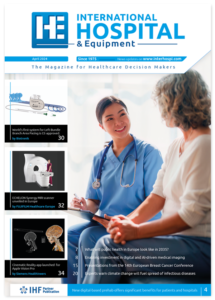New blood pressure guidelines could put lives at risk
A new report by University of Sydney and Bond University scholars weighs the risks and benefits of a recent change to blood pressure guidelines in the US.
Recommendations from the American College of Cardiology and American Heart Association to lower thresholds defining hypertension and the treatment of higher risk patients are sparking debate, the report reveals.
The recommendations from American College of Cardiology and the American Heart Association are as follows:
- lowering the threshold for diagnosing hypertension in adults from 140/80 mmHg to 130/80 mmHg
- lowering the threshold for drug treatment of ‘high risk’ adults with hypertension who have existing CVD from 140/80 mmHg to 130/80 mmHg
- lowering the threshold for drug treatment of adults with a calculated 10-year CVD risk ≥10 percent, or otherwise high risk, for example, people with diabetes or renal disease, from 140/80 mmHg to 130/80 mmHg.
Changing the diagnostic and treatment thresholds for hypertension could put people at risk in three ways, say the University of Sydney and Bond University authors of the report.
“First, wider disease definitions mean more people are labelled as unwell, even if they have low risk of a disease,” said the report’s lead author, Dr Katy Bell of the University of Sydney. “Labelling a person as having hypertension increases their risk of anxiety and depression, as compared to the risk for people with the same blood pressure who aren’t labelled as hypertensive.
“Second, it means more people may experience serious adverse effects from treatments.
“Third, in countries without universal health coverage, such as the United States, people newly diagnosed with hypertension may face difficulties gaining insurance coverage for a ‘pre-existing’ condition.”
Report co-author, Bond University Professor Paul Glasziou said: “The ACC/AHA guideline follow an established pattern in the medical specialties, where disease definitions are more often widened than narrowed.
“Systolic blood pressure has poor reproducibility, with a 10mmHg standard deviation for repeat measurements between clinics,” he added.
“Since a large proportion of all adults have a ‘true’ systolic blood pressure near the threshold of 130 mm Hg, the inherent variability of blood pressure increases the potential that hypertension will be diagnosed.”
The report says 80 percent of people with newly diagnosed hypertension under the ACC/AHA guideline would get no expected benefit in terms of cardiovascular disease risk reduction by lowering their blood pressure. Eleven per cent would get a marginal benefit and nine per cent would get a larger benefit.
However, the 2017 ACC/AHA guideline would classify an additional 13.7 percent of all adults as having hypertension – 31 million additional people in the United States as having hypertension, and around 2.4 million additional Australians.
For the majority of these people, who are at low risk and not recommended for drug treatment (about 25 million), the authors say doctors should not label them as having hypertension.
“Doctors should continue to support healthy choices with regard to diet and physical activity regardless of whether a patient’s systolic blood pressure is above or below 130 mmHg,” said Bond University co-author, Professor Jenny Doust. “When there is a question of starting blood pressure medication, the risk of cardiovascular disease should be estimated using a reliable risk calculator and the potential benefits and harms discussed with the patient”.
University of Sydneyhttps://tinyurl.com/yb6benfj

